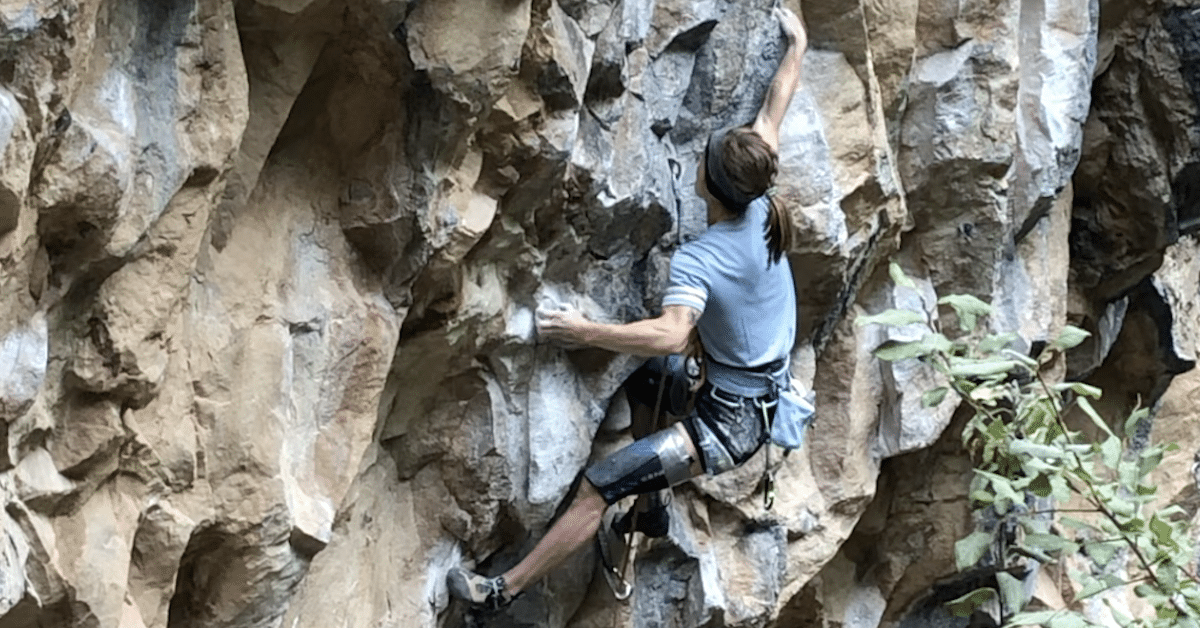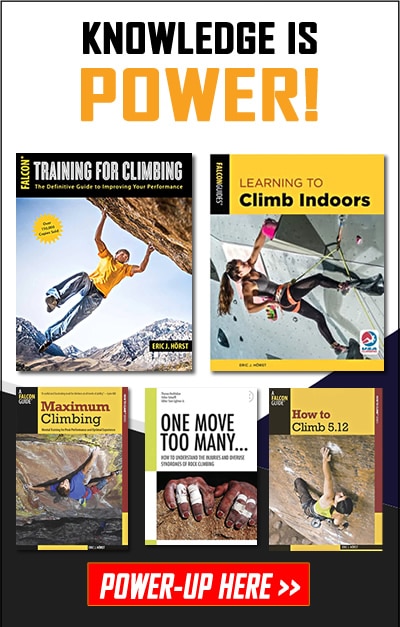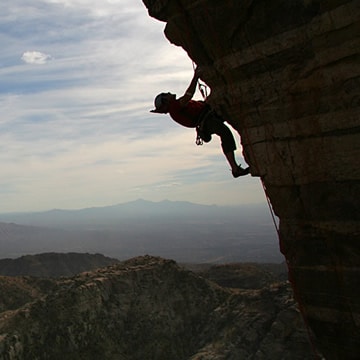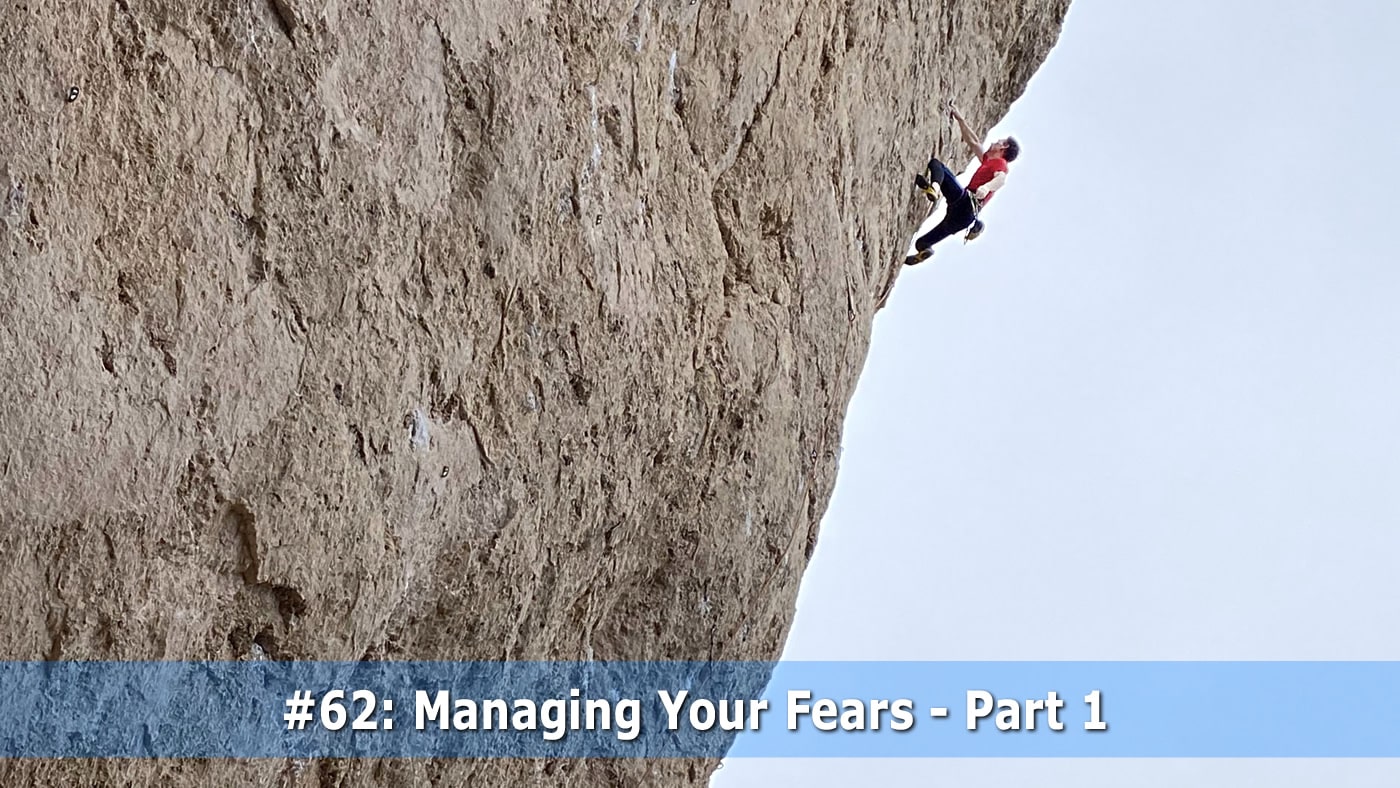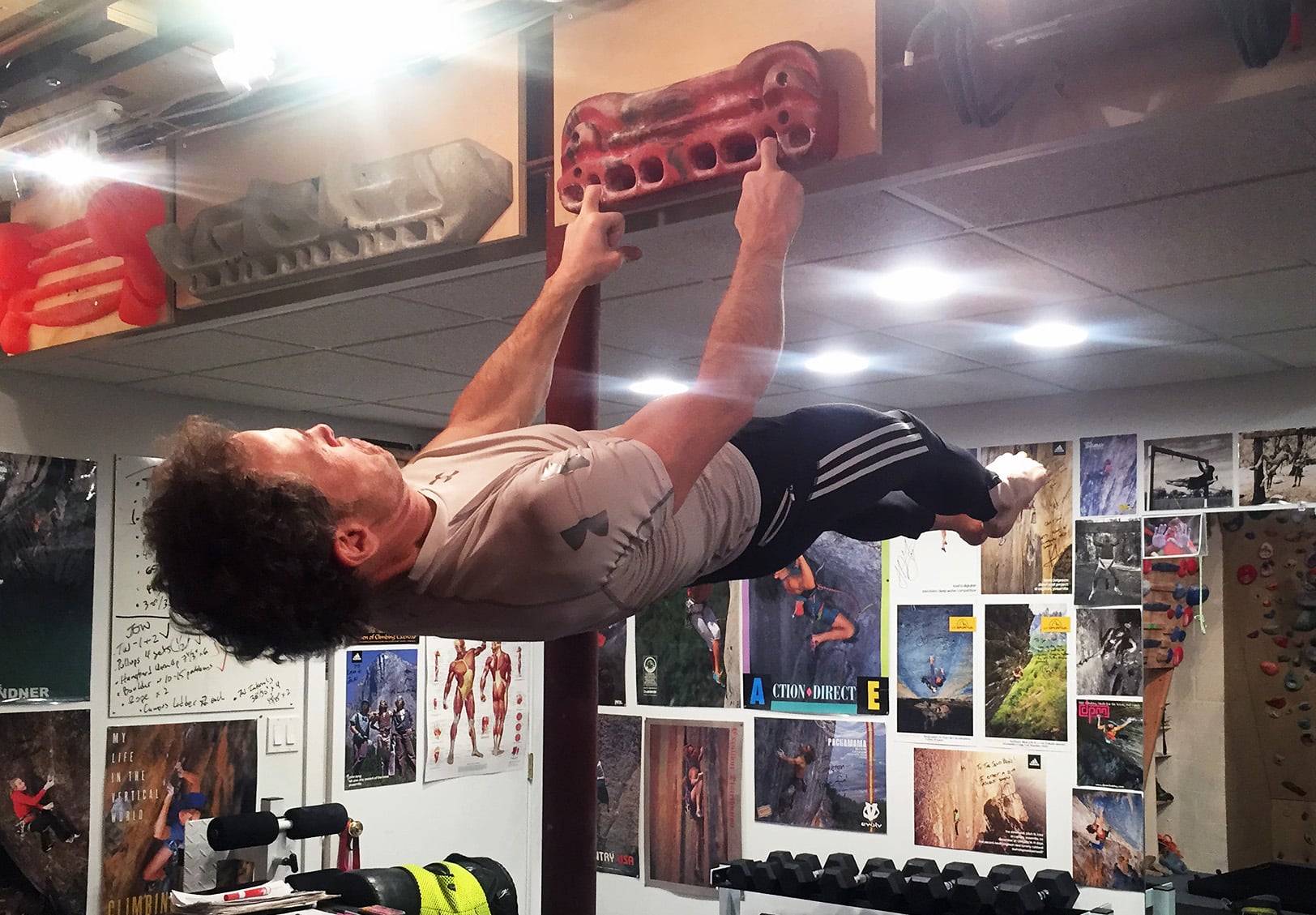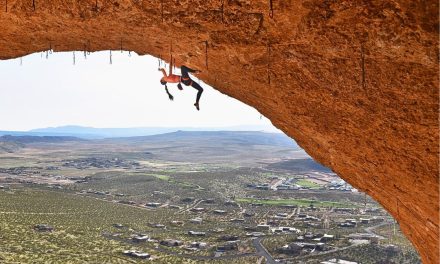Where your attention goes, energy flows. And if your brain is hell-bent on believing that you can’t do something, your climbing will reflect that—no matter what you’re actually capable of. Thoughts determine the effectiveness of your actions. Reframe your negative thoughts and limiting beliefs to change your perspective and, consequently, enhance your climbing.
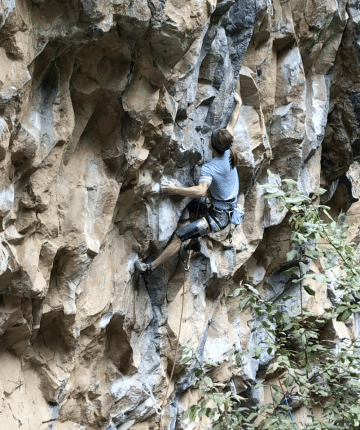
Reframe your thoughts to direct your attention toward what you can do rather than what you (supposedly) can’t. Lucie Hanes on the send go of her project, The 7PM Show (14a), which she achieved in large part through reframing her thoughts around the climb.
Our brains are busy bees. There are a lot of thoughts bouncing around in there at any given time, concerning everything from what’s for dinner to what gets you out of bed in the morning. And while all thoughts serve some purpose, there’s also a time and place for different trains of thought.
The middle of the crux sequence on your project, for instance, might not be the best setting to wrestle with existential fear and doubt. That’s when you want to be channeling confidence above all.
But as anyone who’s found themselves wide awake at 2 AM with their brain on overdrive, thoughts aren’t always easy to control—especially when we’re trying to get them to quiet down or at least wait for a more opportune occasion. Sometimes it’s tough to even tell the difference between helpful versus harmful thoughts.
Spending time with our thoughts, both on and off the wall, can help with making that crucial distinction. Once you’re able to distinguish between the thoughts that support your climbing and the ones that don’t, it’s possible to retrain the brain so that it prioritizes the former over the latter. Improve your concentration and confidence on the wall with these tips on nipping unproductive mental chatter in the bud by reframing negative thoughts.
Observe Your Thoughts
It all starts with awareness. What thoughts tend to occupy the most real estate in your head?
Consider the concepts, questions, and concerns that come up most often for you. That goes for both your climbing and your life beyond climbing. Your performance on the wall isn’t solely dictated by what happens on the wall. Your behavior off the wall also impacts how you show up in climbing. For that reason, it’s important to get an idea of your mental habits across the board.
Go into this exercise with an open mind. We’re not trying to change your thoughts—not yet, at least. That’s the second step. Observation comes first. Give yourself at least five minutes to sit in stillness without any distractions. Spend the first minute actively relaxing your body and mind by focusing on your breathing. As soon as you feel calm, turn your attention away from your breath and onto your thoughts. Maintain a passive attitude to them as they float in and out. Acknowledge each one while holding back your judgment. Now’s not the time to label your thoughts as “good”, “bad”, or anything else.
After five minutes pass, bring yourself back and immediately write down as many of those thoughts as you can remember. Again, refrain from judging them at this point. Document them all in their most raw state without edits or changes. Remember that your thoughts don’t define you. Think of them as data for the next step: reframing them.
Perform this routine under as many different conditions as possible: in the morning, before bed, during a climbing session, after a success, after a failure, before something you’re nervous about, after something you’re proud of, etc. Thoughts change depending on the scenario, so building awareness of what they look like in various situations gives you more data to work with.
Reframe Your Thoughts
Now that you know more about your typical thought patterns, you can take back the reins. Take a look at your lists of observations and note the thoughts that aren’t serving you or your climbing. A good way to do this is to ask yourself “Is this thought helpful?” instead of “Is this thought true?” because our brains can be very convincing. For the purposes of this exercise, it doesn’t matter if the thought is true—just if it’s helpful.
For the thoughts that fall into the decidedly “unhelpful” category, reframe them by crafting responses that allow you to fight back. Try not to lie to yourself when doing this. There is such a thing as toxic positivity. Challenges and struggles exist, and that’s ok. In fact, it’s more than ok. Struggle leads to the most profound growth. The goal here is to reframe these unproductive thoughts in order to focus on the opportunity in store within the challenge.
Here are some examples of common unproductive thoughts within the context of climbing and some productive reframes:
- This climb looks impossible → This climb looks challenging
- I can see myself falling all over this climb → I can see myself making a great effort
- This climb is spanking me and I’ll never figure it out → Each fall gives me more data about the climb to help me figure it out
- I’m scared of this climb → I’ve gone through this on other climbs and I know that fear fades the more I try it
- I’m too short for this climb → I can get more creative on this climb
- It’s too hot to try my hardest → My muscles feel warm and loose in this heat
- I’m too nervous to do my best → I feel energized and excited, and I can also use calming strategies to lower my anxiety
- This climb looks pumpy → I can find places to rest on the route and manage my pump
- There are too many people watching → I climb for myself, not others
- I’m feeling too tired → I’ll try to climb and see how I feel after my warm-up
There’s a flip side to every unproductive thought listed here. Challenges present chances for climbers to improve, push the limits, and confront limiting beliefs. Translating negative thoughts into positive reframes of the possibilities in store is what catapults climbers to the other side of the challenges they face.
Related Articles:
- 6 Concentration Drills to Improve Your Climbing Focus
- How Natalia Grossman Overcame Mental Obstacles for World Cup Wins
- The Power of Pre-Climb Rituals
- Goal-Setting Tactics for Realizing Your Climbing Dreams
- Chunk Down Your Route for Faster Sending
Copyright © 2000–2023 Lucie Hanes & Eric J. Hörst | All Rights Reserved.

